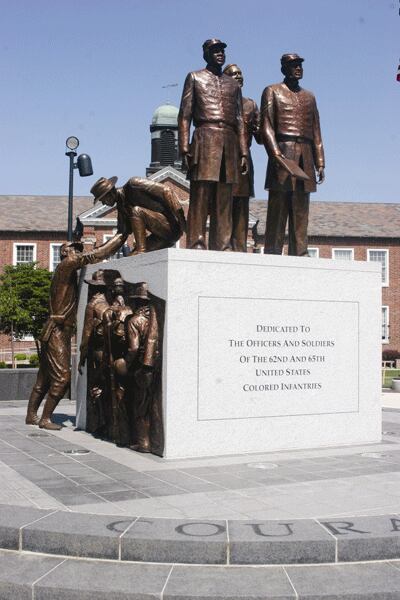Ten Fast Facts about Lincoln University of Missouri
- Lincoln University of Missouri was founded in 1866 by the men of the 62nd and 65th Colored Infantry Regiments. Lincoln University of Missouri is the only university founded by Civil War veterans, as well as the only university founded by African American veterans of any conflict.
- Lincoln University was originally founded as Lincoln Institute. The name was changed to Lincoln University in 1921.
- The first President of Lincoln University was Inman E. Page. He was the university's youngest President at the age of 26. Page was also the only President to return for a second term, which he did 42 years after first arriving at the university.
- Dr. Carolyn R. Mahoney was the first female President of Lincoln University. She served as the 18th President from 2005 until 2012.
- The Lincoln University Women's Track Team has earned 12 Division II Championship Titles since 2004, with five being indoor and seven outdoor. The most recent indoor championship was won in March 2016.
- The Lincoln University Nursing Program has an annual 98% pass rate on the licensure exam, which exceeds the national pass rate average.
- Lincoln University offers 50 learner-centered undergraduate degree programs, as well as graduate degrees in education, business and the social sciences.
- Lincoln University is continually expanding its global reach, with developing partnerships in South Korea, China, Jamaica, Brazil, Cuba and Canada.
- Dr. Kevin D. Rome serves as the 19th President of Lincoln University.
- Lincoln University is actually one of two HBCU named Lincoln University. The other is located in Pennsylvania.
At the close of the Civil War, soldiers and officers of the 62nd United States Colored Infantry, stationed at Fort McIntosh, Texas, but composed primarily of Missourians, took steps to establish an educational institution in Jefferson City, Mo. which they named Lincoln Institute.
The following stipulations were set for the school:
- The institution shall be designed for the special benefit of the freed African-Americans.
- It shall be located in the state of Missouri.
- Its fundamental idea shall be to combine study and labor.
Members of the 62nd Colored Infantry contributed $5,000; this was supplemented by approximately $1,400, given by the 65th Colored Infantry.
On Jan. 14, 1866, Lincoln Institute was formally established under an organization committee.
By June of the same year, it incorporated and the committee became a Board of Trustees. Richard Baxter Foster, a former first lieutenant in the 62nd Infantry, was named first principal of Lincoln Institute.
On Sept. 17, 1866, the school opened its doors to the first class in an old frame building in Jefferson City.
In 1871, Lincoln Institute moved to the present campus. College-level work was added to the curriculum in 1877, and passage of the Normal School Law permitted Lincoln graduates to teach for life in Missouri without further examination.
Lincoln Institute formally became a state institution in 1879 with the deeding of the property to the state. Under the second Morrill Act of 1890, Lincoln became a land grant institution, and the following year industrial and agricultural courses were added to the curriculum.
In 1921, the Missouri Legislature passed a bill introduced by Walthall M. Moore, the first black American to serve in that body, which changed the name from Lincoln Institute to Lincoln University and created a Board of Curators to govern the University.
The North Central Association of Colleges and Secondary Schools accredited the high school division in 1925, the teacher-training program in 1926, and the four-year college of arts and sciences in 1934.
Graduate instruction was begun in the summer session of 1940, with majors in education and history and minors in English, history, and sociology. A School of Journalism was established in February 1942.
In 1954, the United States Supreme Court handed down its ruling in Brown v. Board of Education, and Lincoln University responded by opening its doors to all applicably meeting its entrance criteria.
Today, Lincoln University serves a diverse clientele, both residential and non-residential, engages in a variety of research projects, and offers numerous public service programs in addition to providing an array of academic programs.
Keep Reading
The Latest
Featured

